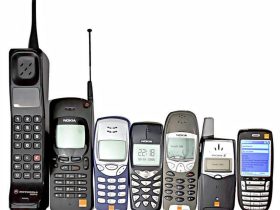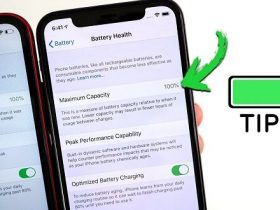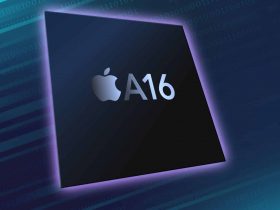In this article, we will look at some of the main differences between the iPhone 13 vs the iPhone 14. The main features of the iPhone 14 are a 6.1-inch display, a dual rear camera, crash detection, and satellite messaging. But are they worth the extra money? The answer depends on your needs.
iPhone 14 has a 6.1-inch display
The iPhone 14 is bigger, with a 6.1-inch display and the same pixel density as its predecessor. It also weighs more than the iPhone 13 at 6.07 inch. The iPhone 14 also has a smaller notch than the iPhone 13 but has the same 800 nits brightness as its predecessor. Both the iPhone 13 and 14 feature cameras with optical and digital zoom. The iPhone 14 also supports Haptic Touch.
Both the iPhone 13 and 14 have a similar design, with an aluminum body and glossy back. The main camera is placed at the top, and both phones weigh 174 grams. The iPhone 13 is slightly thinner than the iPhone 14, and they both support IP68 dust/water resistance.
The iPhone 14 has a larger battery. The iPhone 14 uses a battery that is slightly larger than the iPhone 13’s, and this translates to more battery life. The iPhone 14 gets about an hour more of video playback. The battery also supports fast charging with the new 20W adapter.
While the iPhone 14 is more powerful and features more advanced cameras, it isn’t necessarily the better device. The iPhone 13 Pro is still a great phone and features great cameras, a cinema mode, and a great battery life. Compared to the iPhone 14 Pro, the 13 is cheaper and easier to upgrade.
The iPhone 14 offers a higher resolution display than the iPhone 13. The OLED panel on the iPhone 14 has 800 nits of peak brightness. The iPhone 13 Pro has a 120Hz display, but it isn’t as bright as the one on the iPhone 14. The Pro has a 6.7-inch display.
It has a dual rear camera
The iPhone 14 has a dual rear camera, a new feature that Apple claims to make it easier to take better pictures. While the 12-megapixel wide-angle camera carried over from the previous models is still there, the new 12-megapixel camera features a larger pixel size and f/1.5 aperture. Apple says this will result in higher detail, lower noise, and faster performance. The camera also features second-generation optical image stabilization.
Both iPhone 14 Plus have a dual rear camera. The iPhone 14 Plus adds a third camera. The iPhone 14 is now available for preorder. The standard iPhone 14 keeps the notch at the top of the display. The iPhone 14 Plus, however, is more expensive and has a larger display.
The iPhone 14 Pro drops the notch that many consumers dislike. Instead of a notch, the iPhone 14 Pro has a pill-shaped cutout for the selfie camera. The display also has a new ‘Dynamic Island’, which can expand to display notifications and background activity.
While the iPhone 14 is similar to the iPhone 13 from last year, it’s an improvement over that model. Its battery life is also improved, making it easier to take better photos in low-light conditions. As with the iPhone 13, the iPhone 14 has improved autofocus, which is great for those who use their iPhones to take pictures. A new front-facing camera is also included.
The iPhone 14 Pro models feature 2000 nits of peak brightness, making them particularly useful for low-light conditions. The cameras also have improved low light processing, which Apple calls the Photonic Engine. In addition to the dual rear camera, the iPhone 14 Pro also has a dual-lens front camera for even better images.
It has satellite messaging
If you’re new to satellite messaging, you may be wondering how it works. Satellite messengers use private networks to transmit messages. They can be used as pay-as-you-go services, or billed on a monthly or yearly basis. There are a few important things to keep in mind when choosing a satellite service.
Unlike cell phones, which need to be in close proximity to a cell tower to be in reception range, satellite communicators can work even if you are far away. For example, if you are in the middle of a forest, you can still get good signal because the satellite communicator is pointed at the sky. This can help it cut through clouds and overhead trees. However, it will also use more battery power. Another important thing to know is that messages can go either way.
Satellite messengers are available as standalone devices or in packages with a smartphone. They range in price depending on what type of capabilities they offer. Some models are stand-alone devices with no screens, while others pair with your phone to provide a data connection. Some devices can even send SOS signals on their own. However, for most functions, you’ll need to pair the device with your smartphone. This way, you can still be in touch with friends and family, even while you’re on the road.
It has crash detection
The Google Pixel offers crash detection as a free feature for drivers. In case of a crash, it will notify emergency services. You can also swipe the screen to dismiss the alert. The device will display a countdown of ten seconds and call for help if necessary. If the crash is not an emergency, you can also dismiss the crash alert.
The new Apple Watch has crash detection built in. It detects serious car crashes and sends an emergency call to a 911 operator. The device will also send an alarm to your Apple Watch if it detects a crash. It’s a great safety feature and it works for people in any type of vehicle.
The Apple Watch Series 8 is equipped with crash detection. In the event of a severe car crash, it will immediately connect with emergency services, give a precise location and notify your contacts. The new Apple Watch has a new high-g-force accelerometer and improved 3-axis gyroscope to detect the impact of the crash. The new sensor is four times faster than its predecessor. It is capable of detecting the exact moment of impact.
This feature works in the same way as a car crash notification system, but it has one major limitation: a car accident may not be detected if the driver is driving on his phone. This is because the car must have been moving at least 25 miles per hour for 30 seconds before the crash occurred. The feature also does not detect minor crashes or fender-benders. It requires a good cell phone signal and 20% battery life to work properly.
It has eSIM technology
Apple has officially introduced the new iPhone with eSIM technology. This new technology allows iPhones to use the same SIM card for both US and international use. You can activate two eSIMs simultaneously, or you can set one eSIM to data only when you are traveling abroad. You can also turn on and off data roaming on the eSIM you use at home. To do so, go to Settings>Cellular>Cellular Data Options.
Apple has also confirmed that the iPhone 14 can support eight eSIM cards. However, you can only use two of them at once. The iPhone 14’s setup process explains how to convert the physical SIM card to an eSIM. When you first activate your phone, you will need to transfer your SIM card from your old iPhone and then use the eSIM in your new phone.
The eSIM technology benefits wireless carriers and phone makers alike. First of all, it frees up space inside the phone. This space can be used for other technology. Second, eSIM eliminates the need for a physical SIM card, which saves carriers money. Additionally, it makes switching carriers quick and easy. Another benefit of eSIM is that it works with most carriers.
However, it is important to remember that eSIM technology is not an option for all iPhones. Apple has already worked with US carriers to prepare for the transition. If you plan to buy the iPhone 14, make sure to ask your carrier whether it supports eSIM technology. Most of the major US carriers support eSIM, but many MVNOs do not.
Despite the widespread adoption of eSIM technology, some users are still worried about changing carriers or eSIM technology. However, Apple has been a trendsetter in the global smartphone market, and other brands have copied their moves. With the new iPhone 14 series, Apple is introducing a new era of smartphones with eSIM technology. This new trend is expected to gain steam, as Apple has paved the way.









Leave a Reply